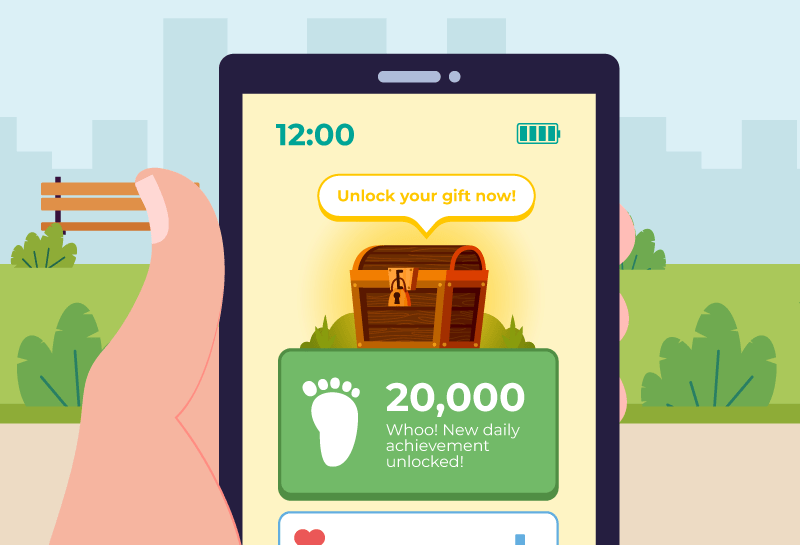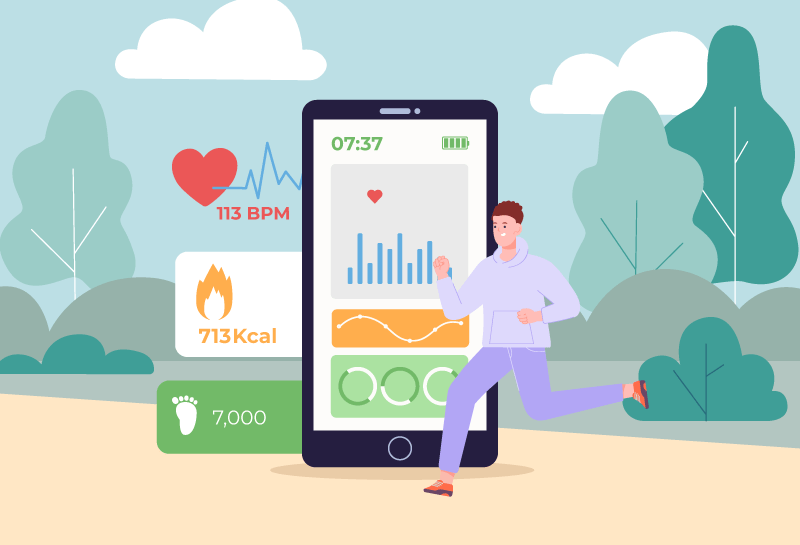The world was already on the edge of a digital fitness revolution when the pandemic hit, but it was the lockdowns that catapulted the fitness industry into the digital age. Suddenly, gyms, once bustling with clanking weights and treadmills, turned into a landscape of pixels and streaming videos. In the blink of an eye, fitness went from hands-on, in-person experiences to at-home, digital workouts. Now, as the world reopens, it’s clear that virtual workouts have sparked a shift in how millennials approach fitness and this change isn’t going anywhere.
The surge of virtual fitness: More than just a pandemic response
When gyms shuttered in 2020, millions of people were forced to rethink their fitness routines. In this unexpected vacuum, technology swooped in to fill the gap. Platforms like Peloton, a leader in connected fitness, and ClassPass, which expanded into virtual fitness classes, were quick to adapt and meet the growing demand for at-home workouts. But the shift wasn’t merely about convenience; it was a transformative change in how people think about fitness.
For millennials, who already embraced digital solutions for everything from shopping to entertainment, the transition was seamless. According to a 2020 Deloitte survey, the pandemic accelerated the adoption of health technology, with many consumers relying more on digital tools for health monitoring and virtual health care services. While fitness-specific figures were not directly surveyed, the broader trend of increased engagement with technology for health management (including fitness wearables and virtual health care) highlights how virtual fitness became a significant part of many people’s routines during this time.
The millennial perspective: A new kind of fitness
Millennials aren’t just looking for ways to work out; they’re after a more holistic approach to wellness. For them, fitness encompasses mental clarity, emotional wellbeing, and a sense of connection to their bodies. Virtual fitness solutions allow them to personalise their routines in ways that traditional gyms simply can’t.
Apps like MindBody and ClassPass offer thousands of virtual classes in yoga, HIIT, and dance, while tracking progress and providing access to top-tier trainers. The flexibility to engage in fitness on their own schedule, without the constraints of gym hours or crowded spaces, resonates deeply with this generation.
As digital natives, millennials gravitate toward platforms that integrate health data, social interaction, and immersive experiences. Virtual workouts provide more than just exercise; they offer an ecosystem where users can manage their wellbeing, track progress, and engage with trainers and fellow gym-goers, all from the comfort of home.

DID YOU KNOW?
Virtual fitness apps are starting to include live DJ-led workouts, combining high-energy music with your favourite fitness routines for an exciting workout experience.
However, as the virtual workout boom continues, there’s a deeper issue at play: Are these solutions meeting the needs of millennials, or is there a gap that the tech giants are missing?
The virtual fitness gold rush: Who’s profiting?
While millions of millennials have embraced virtual fitness, one critical factor cannot be overlooked: Who’s truly benefiting from this digital shift? The global connected fitness market is projected to reach USD 59 billion by 2027, a sharp increase from USD 2 billion in 2019. Major players like Peloton, Apple Fitness+, and Lululemon Studio (formerly Mirror) are thriving, but so are a host of smaller startups offering customised and interactive fitness experiences.
While the boom in virtual fitness is clear, accessibility remains an issue. Platforms like Peloton come with hefty price tags. The All-Access Membership is $44 per month for users with Peloton equipment, while the Peloton Digital Membership is $12.99 per month for app-only access. This makes them an attractive option for some millennials but an unattainable luxury for others, especially those still recovering from the economic impact of the pandemic.
In emerging markets like APAC, the contrast in accessibility is even more pronounced. In countries like India and Indonesia, the cost of high-end fitness equipment and the internet infrastructure needed for seamless virtual classes can limit access to digital fitness platforms. Even in more developed countries like China and Japan, the fitness tech boom faces challenges due to income disparities and infrastructure gaps.
The next frontier: Wearables, VR, and a more immersive future
The digital fitness boom is only the beginning. As technology advances, fitness is expected to become even more personalised and immersive. Wearables like Apple Watch and Oura Ring have already changed how people approach fitness, providing insights into heart rate, sleep patterns, and activity levels. In the near future, these futures could seamlessly integrate with virtual workouts, allowing instructors to adjust routines in real-time based on live data.
Virtual reality (VR) and augmented reality (AR) also promise to revolutionise the fitness experience. VR platforms like Supernatural and FitXR already transport users to immersive, virtual landscapes where they can engage in cardio, yoga, or strength training. These experiences go beyond traditional workouts, turning fitness into an interactive and gamified activity. For millennials, who are accustomed to gaming and digital engagement, VR fitness offers an exciting way to blend exercise with entertainment.
However, the accessibility of these technologies is still in question. While VR and AR have huge potential, they require costly equipment, including headsets and powerful computers. This could limit their appeal to a broader audience, particularly in less affluent regions.

DID YOU KNOW?
Some fitness apps now offer “smart” workouts that adjust to your body’s performance, ensuring you get the best results every time you exercise.
Fitness trends in APAC: Emerging markets and local preferences
In the APAC region, where fitness culture is still evolving, tech-driven fitness solutions are quickly gaining traction but look different from Western markets. In countries like China and Japan, fitness apps like Keep are seeing a surge in popularity, offering everything from live-streamed yoga classes to personalised workout plans that cater to diverse fitness levels. In China, the rise of live-streamed fitness classes, particularly in tier 2 and 3 cities, has become a major trend. Influencers and fitness trainers interact directly with audiences in real-time, providing a sense of community and engagement that resonates strongly with millennials.

DID YOU KNOW?
In countries like China, fitness apps like Keep have over 200 million users, making it one of the most popular fitness apps in the world.
In India, urban millennials are increasingly turning to virtual workouts, with apps like Cure.fit gaining a loyal following. Cure.fit combines fitness with mental wellness and nutrition, catering to a generation that values holistic health. This hybrid model of in-person and virtual workouts fits the needs of millennials who want flexibility but also seek community. However, challenges such as inconsistent internet access in rural areas still hinder broader adoption of these platforms.
In Southeast Asia, apps like Fittr are seeing rapid adoption. Fittr, which started in India, has expanded its reach in Southeast Asia, offering personalised fitness plans and nutritional guidance. Additionally, Zumba® Fitness is well-received in countries like the Philippines, where community-based fitness activities and virtual dance workouts have a strong following.
The challenges and ethical dilemmas of tech-driven fitness
As virtual fitness continues to evolve, it faces a range of challenges that need to be addressed. While the convenience of at-home workouts is appealing, it can contribute to social isolation. Traditional gyms offer a sense of community, something that virtual fitness struggles to replicate. There’s also the issue of screen fatigue, where millennials, who already spend much of their day in front of screens for work and leisure, might find it increasingly difficult to engage in virtual workouts after hours.
More concerning, however, is the issue of data privacy. With wearables and virtual platforms collecting extensive health data, concerns about how this information is used and protected are growing. Fitness tech companies must navigate the balance between offering personalised experiences and safeguarding user privacy.
Virtual fitness is here to stay
Virtual fitness has revolutionised how millennials approach health and wellness, offering flexibility, convenience, and customisation. It’s not just a passing trend; It’s a fundamental shift in how fitness is integrated into daily life. However, as the market matures, issues like accessibility, affordability, and data privacy need to be addressed. In the APAC region, virtual fitness is becoming a key part of the wellness ecosystem, but it’s clear that more must be done to make these solutions widely accessible.
As technology evolves, fitness is likely to become even more immersive, personalised, and interactive. Millennials are leading this transformation, reshaping the future of fitness in ways that go beyond mere adoption. The fitness industry is changing, and for millennials, the journey is just beginning.



 Copied
Copied











 5 mins read
5 mins read 





